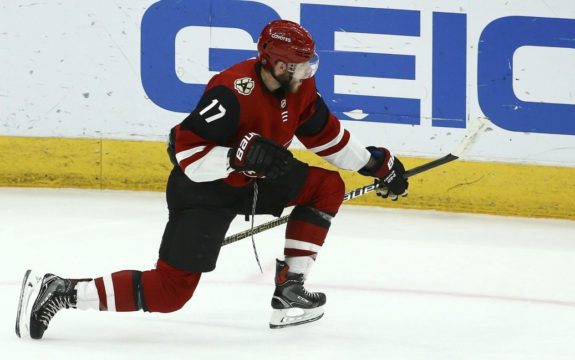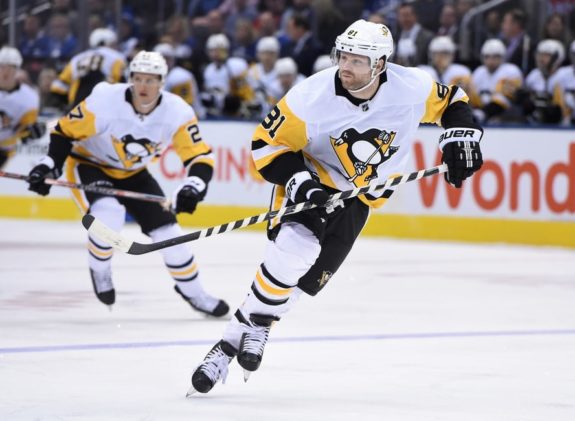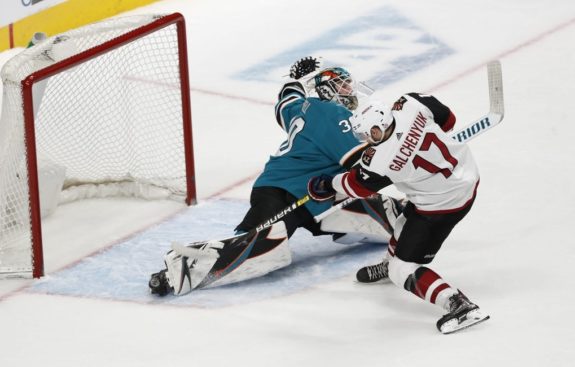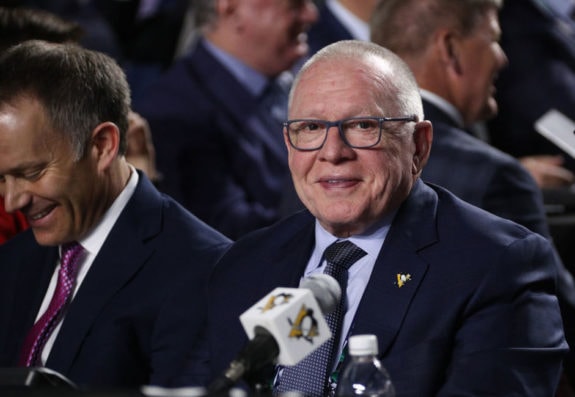At the very least, the Pittsburgh Penguins just replaced Phil Kessel with another scapegoat in Alex Galchenyuk.

That’s one way to look at the offseason trade that saw Kessel traded to the Arizona Coyotes. Obviously, the contract status of Galchenyuk, who will be an unrestricted free agent at the end of next season, is the main downside of the deal, seeing as Kessel, a perennial point-per-game threat, will still have two years remaining on his contract at that time.
Penguins Won Kessel Trade
As a result, it’s easy to assess the deal as a win for the Coyotes, but, at the end of the day, the Penguins seem to believe they got all they could out of Kessel. They wanted to get rid of him and his cap hit too, remember? Plus, two Stanley Cups aren’t bad by any stretch, making the original deal that brought him to the Penguins a huge win.

It would be hard to argue otherwise. After all, in retrospect Kasperi Kapanen ended up the only significant piece going back to the Toronto Maple Leafs in that one (the 2016 first-round draft pick, Sam Steel, may still pan out, though). The Penguins have effectively gotten back his production thanks to Galchenyuk (along with a separate first-rounder in defenseman Pierre-Olivier Joseph), plus a lot more.
Galchenyuk Poised to Break Out
There’s obviously the cap flexibility that the Penguins needed, with Galchenyuk earning just $4.9 million this coming season (compared to the $6.8 million cap hit of Kessel’s). However, what few critics of the deal seem willing to acknowledge is, just like Kessel is a former 30-goal scorer, so is Galchenyuk.
Granted, Kessel accomplished the feat four times by the time he had hit Galchenyuk’s 25 years of age. Galchenyuk has just the one season, in 2015-16, when he earned a career-high 56 points. Nevertheless, the talent is there.
Considering Galchenyuk is in his prime, not only can he realistically get back there, but, if he ends up playing with either Sidney Crosby or Evgeni Malkin, he can exceed those totals. In fact, it’s not entirely out of the realm of possibility that he outscores Kessel next year. Ah, the benefits of having a legitimate center with whom to play. You see, when Galchenyuk was with the Montreal Canadiens, he routinely got shafted with how he was deployed.

First, despite the fact Galchenyuk was drafted as a center, he was rarely played as one, even if he showed offensive prowess in between Max Pacioretty and Alexander Radulov to start the 2016-17 season, scoring 23 points in his first 24 points before an injury put him on the shelf. With the emergence of pivot Phillip Danault and his superior two-way play, Galchenyuk toiled on the wings when he got healthy, up until the time he got traded.
Secondly, when Galchenyuk was deployed on the wing, his linemates generally left a lot to be desired. In his last season with the Habs, he played the most with Jacob de la Rose and Artturi Lehkonen. He still managed 51 points during a deceptively quiet, but still successful 2017-18. Last season, with the Coyotes, despite being limited to 72 games, he came within one marker of reaching 20 for the third time in his career. He could still only do so much on an injury-depleted roster that scored the third-least amount of goals in the NHL (209).
Kessel vs. Galchenyuk
So, seeing as he won’t be relied on to be the guy but more of a secondary scorer, Galchenyuk should have little trouble contributing on the Pens. He admittedly has his defensive issues, but so did Kessel, who was seemingly scapegoated as a result. This in spite of the fact general manager Jim Rutherford went forth and acquired the analytics-challenged Erik Gudbranson and Jack Johnson to improve his defense. Plus, that cap hit relief? Rutherford just tied it up (and more) in fourth-liner Brandon Tanev for six years.

Ultimately, Galchenyuk gives the Penguins what they need: an offensively capable replacement for Kessel in the top six. If he’s deployed correctly, he’s poised to break out to an even greater extent this season. He may even end up pricing himself out of the Penguins’ price range next summer. If so, thankfully for Rutherford, Galchenyuk’s no stranger to the role of scapegoat.
Rutherford could realistically be faced with the decision of whether or not to pay through his teeth to keep Galchenyuk if the pending UFA exceeds expectations. He can then choose to walk away. If Rutherford does the rational thing in today’s NHL and pays up to retain his services though, he’ll have just acquired a younger Kessel. Based on the overall success both Kessel and the Pens enjoyed during his tenure, there are worse problems to have.